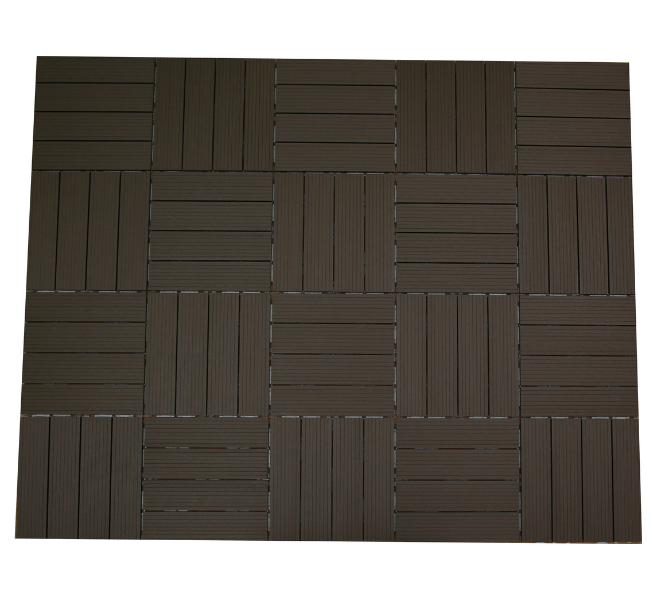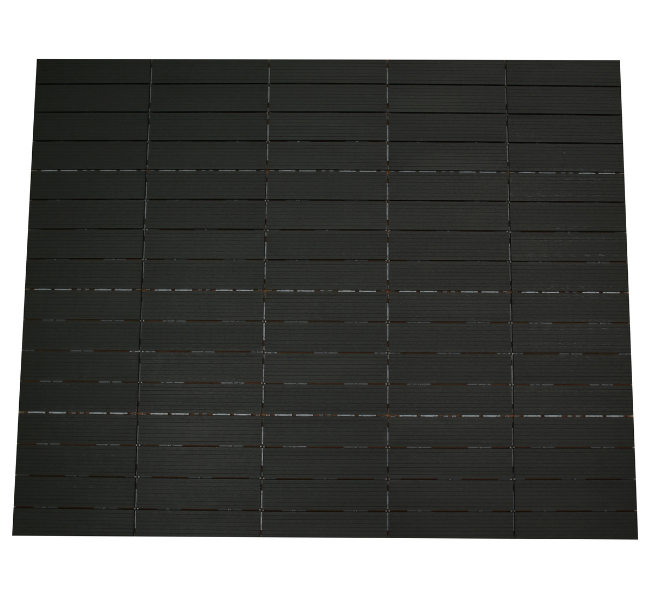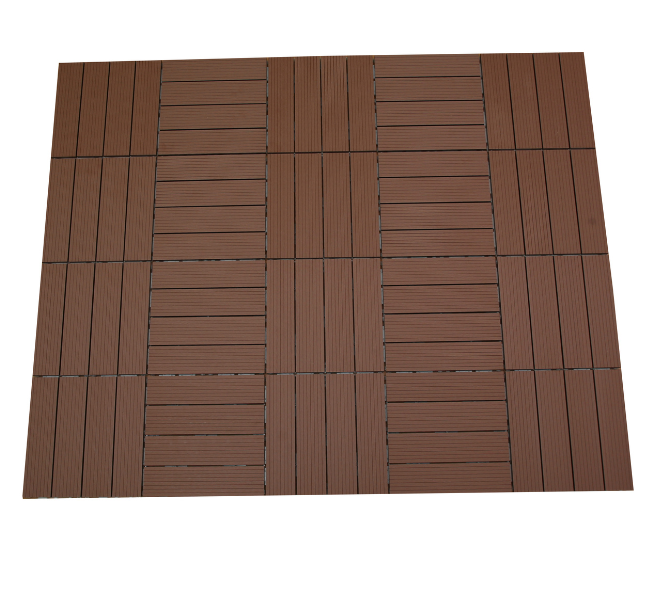ENRICH DECK FLOORING
Enrich Decking, a line of composite deck tiles, has been gaining popularity among homeowners who want to enhance their patios and gardens with an eco-friendly and durable product. Composite deck tiles are made of a combination of wood fibers and recycled plastic that is pressed and extruded into a product that mimics the look of wood.
One of the major benefits of Enrich Decking is its ease of installation. Unlike traditional wood decking, Enrich Decking can be installed over concrete or dirt that has been leveled, which means you don't have to worry about costly and time-consuming preparation work. And since the deck tiles are designed with interlocking clips, the whole project can be completed in just a matter of hours, even if you're doing it alone.
In addition to being easy to install, Enrich Decking is also easy to maintain. The plastic component of the composite material protects the wood fibers from moisture and insect damage, which means there's no need to worry about rotting or splintering.
And because the wood fibers protect the plastic from UV damage, Enrich Decking retains a natural look and feel.
Another advantage of Enrich Decking is its portability. Since the deck tiles can be easily removed, you can take them with you if you move or if you want to switch up your outdoor decor.
Overall, Enrich Decking is a leading green environmental protection material in the 21st century. By using Enrich Decking, you're not only creating a beautiful and durable outdoor space, but you're also making an eco-conscious choice. Ego, the supplier of Enrich Decking, is committed to providing high-quality WPC board and a strong deck tile base to ensure that their clients receive a durable and long-lasting product. “Experience the Beauty of Nature with Enrich Deck Flooring - The Perfect Eco-Friendly Solution for Your Outdoor Living Space!”

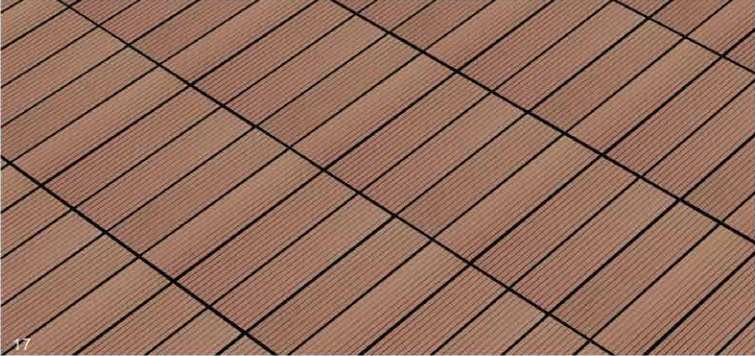
| Sr No | Testing Items | Report No | Test Standard Result | Remark | |
|---|---|---|---|---|---|
| 01 | Coefficient Of Friction | AU10124005-1 | EN 13893 | 0.25 | |
| 02 | Fallimg mass impact | AU10124005-1 | CEN几S 15534 -1 | Energy Level: 15 J Code:(23,15) | |
| 03 | Flexural properties | AU10124005-1 | EN310 | Flexural strength: 22.3N/mm2 Modulus of elasticity: 3021 N/mm2 | |
| 04 | Creep factor | AU10124005-1 | ENV 1156 | kc,300h,SCl, 25%: 0.92 (300 hours creep factor) | |
| 05 | Xenon artificial weathering | AU10124005-1 | EN ISO 4892-2 Method A | After 1000 hours exposure Gray scale 2-3 | |
| 06 | Swelling and water absorpt | AU10124005-1 | EN317 | Gt (Swelling in thickness): 〇 .5% Water absorption: 2.9 % | |
| 07 | Moisture resistance | AU10124005-1 | EN321 | Gt (Swelling in thickness): 0.3% Flexural strength: 19.7 N/mm2, decrease 11.7% Modulus of elasticity: 2672 N/mm2. decrease 11.6% | |
| 08 | Heat reversion | AU10124005-1 | EN479 | R (Heat Reversion): 0.11% | |
| 09 | Shore hardness | SP100502753 | ASTM D2240-05 | A/72/1 | 808 |
| 10 | Apparent Density | SP100502753 | ASTM D1622-08 | 790kg/m3 | 808 |
| 11 | Coefficient of linear therms | SP100502753 | ASTM D696-08 | 1.06 x 10-4(l/°C) | 808 |
| 12 | Impact resistance | SP100502753 | ASTM D4495-00(2005) | Mean failure energy: 35J | 808 |
| 13 | Tensile strength | SP100502753 | ASTM D4761-05 | 19.2 MPa | 808 |
| 14 | Flexural strength | SP100502753 | ASTM D6109-05 Method A | 25.80 MPa | 808 |
| 15 | Rohs | SHATY1007659701 | IEC 62321:2008 | Pass | 808 |
| 16 | Fire Testing | 160926042GZU-002 | EN 13501-1: 2007+A1: 2009 | Classification: Bfl-sl CHF: 9.2 W/m2 >8.〇 kw/m2 Fs: 34mm <150mm within 20 s Smoking measurement integrated smoke value: 114% x min く750% x min | |
| 17 | Moulds Resistance | (2016) DM16-179 | ASTM G 21-13 | Grade of Moulds resistance: 〇 | 迪美生物 |
Installation process - composite deck tiles
How to upgrade your patio, balcony or outdoor space with composite tiles in a snap! DIY friendly, these squares connect without the need for tools or substructure, just lay and enjoy!
There is few steps to install WPC tiles :
1. Before start installation
Before you start, make sure you’re working on a hard surface that’s clean. And flat with no more than 2% grade. Measure that area to ensure the last row of tiles will be at least 3 inches wide and check to make sure all gates and doors will have enough clearance over your tiles.
After that, you can snap them together in just a few minutes with no tools required. However, if you do need to make a custom cut to fit an irregular space , it’s best to have a circular saw a chop saw or a jig saw , tape measure, pencil and safety equipment like gloves, a dust mask eye protection and earplugs.

2. Start laying the deck tiles
Start laying the composite tiles in rows and make sure they fully snap together on all four sides. If you’re creating a pattern , it is a good idea to take a step back from time to time and check your progress.
Most people would like a cross hatch pattern, but you could also have them all pointing in the same line if you prefer that look. It is all good for installation.

Composite deck tiles in cross hatch pattern
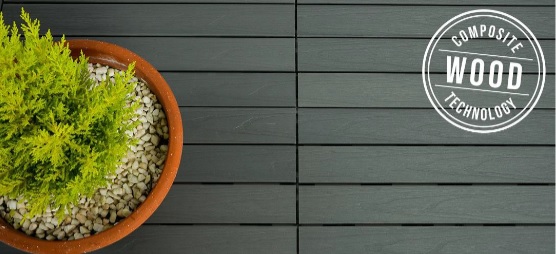
Composite deck tiles in straight line pattern
3. Keep lay tiles until the pieces to the end of the row.
Interlock and snap all the deck tiles together for a secure fit, until you clip the pieces to the end of the row. If you need to cut part tiles to finish the row, leave them off for now. And remember to hold on to any extra tiles you didn’t use just in case you ever need a replacement.

4. Cut the tiles to lay the edge of area
There may be some irregular edge of your installation area, so you can cut the tiles in a shape you need to fit the edge. When cutting, remember the tiles cannot be less than three inches wide. Besides, ensure that your edge connections are compatible with your cut piece. For curved or shaped cuts , it’s a good idea to cut a piece of cardboard to use as a guide. You can use a handsaw as a tile needs to be trimmed , but a motorized/cordless circular saw, chop or jigsaw with a carbide tipped blade works best. Later just snap these onto the tiles to complete the installation.
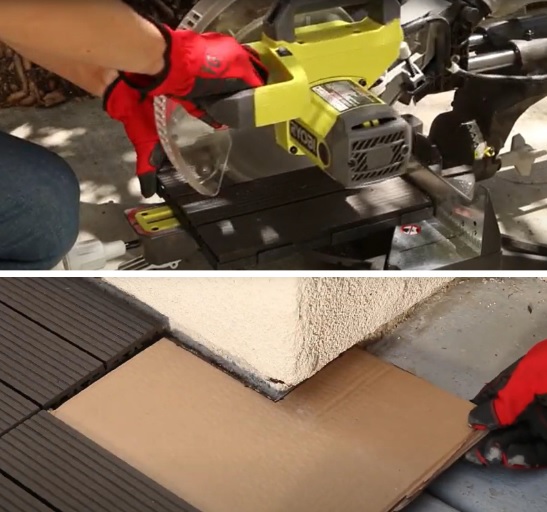
After that, all that’s left to do is sit back on your favorite deck chair and relax!
5. Some tips during installation & using & maintenance
1) If you have to remove a tile, simply grip it near the locking mechanism and lift up while holding down the surrounding tiles.
2) If for any reason, one of the panels detaches from the black base, do not try to force it back together as this can damage the prongs of base. Instead carefully insert a flat headed screwdriver into the locking mechanism on the underside of the detached panels and bend the prong gently in ward on both sides while simultaneously applying pressure until it snaps back into space.
3) For other care and maintenance , it’s a good idea in general to try and keep your tiles free of debris and not drag heavy objects across them.
Ego Enrich Deck tiles are great as flooring for any of outdoor deck, patio, garden , terrace, balcony , and they’re even light enough to use on balconies. Besides, those aren’t the only places you can use them. Composite deck tiles can be installed indoors as well.
A little maintenance and cleaning can easily refresh your composite decking and maintain the aesthetic and utility of your deck. You can even prepare some soap, vinegar, and water to make your homemade decking cleaner. Here are some easy steps to clean and restore your composite decking.
Step 1: Remove all the stuff on the deck to ensure a smooth cleaning process.
Step 2: Sweep the dirt and debris and ensure no leaves on the floor before spraying water.
Step 3: Spray the deck with warm water and remove as much surface mold as possible with your hose.
Step 4: Gently scrub with soapy water using a soft bristle brush. For mold removal, it is recommended to use vinegar mixed with water to pour directly on the mold.
Step 5: After scrubbing and cleaning the deck with a brush, you should rinse the composite decking thoroughly. This step is significant and is the last step that cannot skip. Rinsing the WPC decking thoroughly can prevent a thin coating on the composite surface.
Select and Use the Right Cleaner
Selecting the right cleaning product can, to a certain degree, reduce your maintenance cost and save your effort in cleaning. The surface of the composite decking appears solid. Still, it is rather porous, necessitating the use of oxygenated cleaner capable of reaching deep into the inside material and cleaning the surface of the WPC composite decking. While purchasing a cleaner, carefully read the instructions. Do not purchase the deck cleaning product with the chemical “Chlorine Bleach,” which will penetrate your WPC outdoor decking and cause corrosion. Consequently, it will discolor the composite decking, ruining the surface and worsening mildew/mold issues. Therefore, selecting and choosing a chlorine bleach-free, sodium percarbonate-based cleaning product, or using homemade cleaner is important to avoid the risky mistake.
Gaps Cleaning is Also Important
If you want to keep mold from forming beneath the WPC outdoor decking, you should pay attention to the decking surface’s regular cleaning and, most importantly, the gaps cleaning. Dirt and debris can accumulate over time, and the moisture collecting in the air can create an ideal growing environment for mildew and mold. To prevent mildew and mold from destroying the decking and extend the service life of the WPC decking, it is recommended to clean up the spaces between the deck boards regularly, keep the deck dry and allow air circulation between the decks.
Adopt Gentler Washing Approach for Your Deck
Generally speaking, a gentler cleaning way is ideal for composite decking since pressure washing may cause damage when not operating correctly. If you must use a pressure washer, it is recommended to use a household pressure washer with the lowest pressure and keep no closer than 25cm away from the decking. Since WPC composite decking is not as hard as real wood, it may be “scratched” easier than wood, causing mold stain in the opening, which will be incredibly difficult to remove and clean. Therefore, a garden hose should be good enough for regular cleaning in most circumstances.

